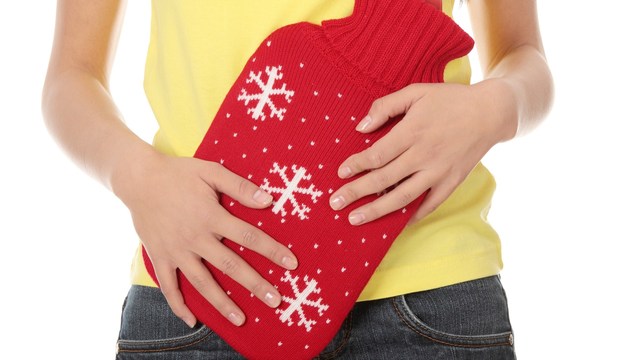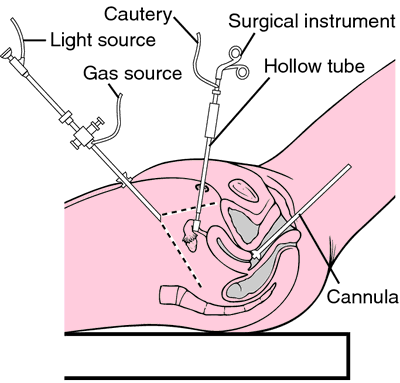 B-D-S/PhotoSpin
B-D-S/PhotoSpin
Fibroids can cause severe menstrual pain, but so can endometriosis. What’s the difference between these two conditions?
Uterine fibroids are benign lumps of muscle and connective tissue that grow on the uterine wall. Nearly one in four women over 35 is affected. They can be tiny like apple seeds or big like grapefruits and several can occur at once.
Most uterine fibroids are harmless and don’t cause symptoms. However, fibroids can cause a feeling of moderate pelvic pressure at any time. And the closer they are to the uterine lining, the heavier the menstrual flow. It may last longer than seven days and/or cause a need to change tampons every hour or two.
Discomfort or pain during intercourse can also occur with uterine fibroids.
Other symptoms include an irregularly shaped uterus which may put pressure on the bowel and/or bladder. This can result in difficulty with bowel movements, constipation, urinary frequency, incontinence and backaches. Reproductive problems include recurring miscarriage, infertility and labor complications.
Fibroids can be removed via laparoscopic or robotic surgery. The blood supply to fibroids can be severed with endometrial ablation or by removing the entire uterus.
Anti-estrogen hormone treatments can shrink fibroids but due to their side effects, can only be taken for a short time.
Endometriosis is a condition where the type of tissue that lines the uterus also grows outside the uterus, usually on the ovaries, the fallopian tubes, the outer wall of the uterus, the intestines, or other organs in the abdomen.
Since they are the same type of cells that usually line the uterus, they respond to estrogen and grow a little each month and sometimes slightly bleed. As this tissue is outside of the uterus, blood cannot flow out of the body and therefore can cause irritation and pain.
This painful condition affects up to one in three women. Unfortunately it takes an average of 10 years to diagnose endometriosis after symptoms start, partly because so many women think it's merely severe menstrual cramps.
Symptoms may include heavy periods, painful menstrual cramps, bloating, constipation and/or diarrhea. Many experience pelvic pain that stretches down the back, down the legs or into the vagina or rectum. Women may endure pain with urination, bowel movements, as well as during or after sexual intercourse.
Endometriosis can also cause infertility.
Though endometriosis cannot be cured, it can be managed.
Nonsteroidal anti-inflammatory drugs are often prescribed first. Some women also find acupuncture, physical therapy or biofeedback helpful. Medical treatment includes oral contraception or removal by cautery, laser or surgery.
Sources:
"Endometriosis and fibroids." Mail Online. N.p., n.d. Web. 22 Dec. 2013.
http://www.dailymail.co.uk/femail/article-8146/Endometriosis-fibroids.html
"Fibroids & Endometriosis Treatment.": Commonwealth Women’s Care. N.p., n.d. Web. 22 Dec. 2013.
http://www.commonwealthwomenscare.com/fibroids-endometriosis-treatment.php
"Infertility Treatment Options: Other Reproductive Disorders." Endometriosis Symptoms, Ovarian Cyst Symptoms and Treatment- BWH. N.p., n.d. Web. 22 Dec. 2013.
http://www.brighamandwomens.org/departments_and_services/obgyn/services/reproductivemedicine/treatments/crm_other.aspx
"Slideshow: A Visual Guide to Uterine Fibroids." Fibroid Pictures: Symptoms, Types, and Treatments of Uterine Fibroids. N.p., n.d. Web. 22 Dec. 2013.
http://women.webmd.com/uterine-fibroids/ss/slideshow-fibroid-overview?ecd=wnl_wmh_102913&ctr=wnl-wmh-102913_hdln_3&mb=
Uimari, Outi, Ilkka Järvelä, and Markku Ryynänen. "Abstract." National Center for Biotechnology Information. U.S. National Library of Medicine, 5 July 2001. Web. 22 Dec. 2013.
http://www.ncbi.nlm.nih.gov/pmc/articles/PMC3136067
"What Your Cramps Are Telling You." Cosmopolitan. N.p., n.d. Web. 22 Dec. 2013.
http://www.cosmopolitan.com/advice/health/what-your-cramps-are-telling-you-0609
Reviewed December 26, 2013
by Michele Blacksberg RN
Edited by Jody Smith




Add a CommentComments
There are no comments yet. Be the first one and get the conversation started!